Healthcare Technology
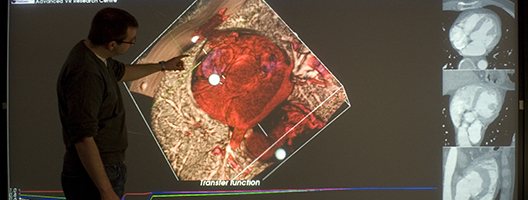
Connecting Clinicians to Distributed Interactive Visualizations
Experiments in fluid dynamics, molecular chemistry and medical imaging are generating increasingly large multi gigabyte data sets. Such data sets demand high-end aggregated rendering hardware to achieve interactive visualization. An effective system for harnessing these resources is essential to scientific visualization. However, previous work in this area has relied on static rendering configurations that are unable to respond to changes in resource performance and cannot maintain user interaction requirements.
StreamAR (Stream Adaptive Rendering) developed at Loughborough University is an innovative solution to this problem, allowing clinicians to interactively explore huge data sets (such as the visible human shown left) by adapting the visualization process to aggregated distributed resources. The adaptive rendering technology automatically adapts the graphics stream of bespoke applications to match the interaction requirements of a user to available resources. The adaptive technology aims to provide users with low latency interaction combined with the visualization power of aggregated grid computing resources.
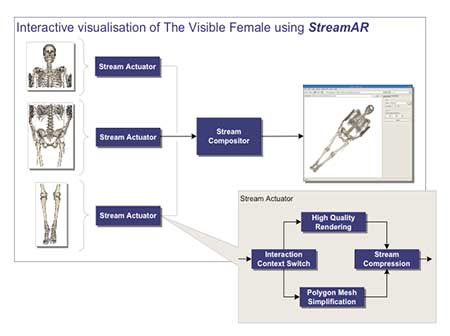
Maintaining Quality-of-Service Through Automatic Stream Adaptation
The research carried out into adaptive distributed rendering has lead to a series of novel stream actuators which co-operate through a control framework to achieve specific quality-of-service metrics. Each actuator maintains an internal performance model of the rendering process, which allows each actuator to automatically adapt an application’s OpenGL stream to meet the available resources.
Two examples are the texture and mesh actuators, which act on texture images and polygon meshes respectively. Both actuators co-operate to maintain a target framerate whilst optimising rendering fidelity (pictured left).
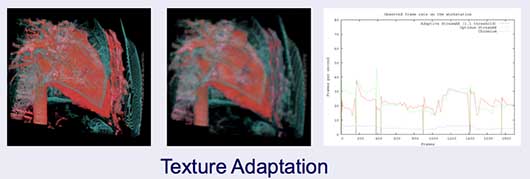
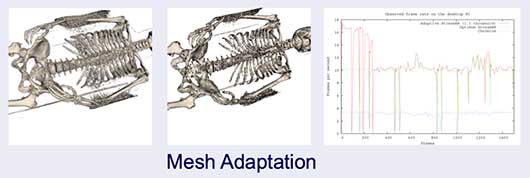
Each graph shows the performance achieved during user interaction using three different configurations with a desired framerate of 20fps. The previous state-of-the-art technology (blue line), the new StreamAR system (red line) and the theoretically optimal solution (green line). In both example cases the StreamAR system is shown to coverage on the optimal solution.
Accessing the Rendering Service
Launching StreamAR is performed through a unique render agreement framework that allows users to quickly specify quality-of-service requirements. The framework utilises standard web services to allow users to create service agreements that are then automatically matched to available grid resources. This matching process provides users with the facility to obtain guarantees on visualization performance such as rendering time and visual quality thresholds.
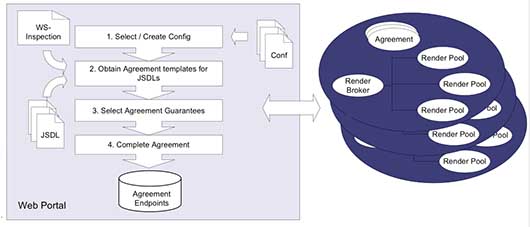
For more information please contact Professor Roy S. Kalawsky
email: r.s.kalawsky@lboro.ac.uk
Photoplethysmography in Noninvasive Cardiovascular AssessmentDownload a pdf containing this information
